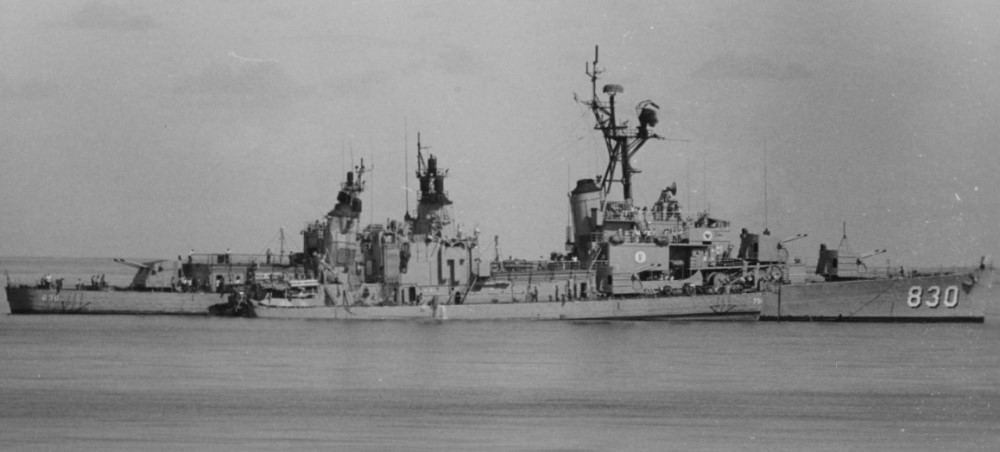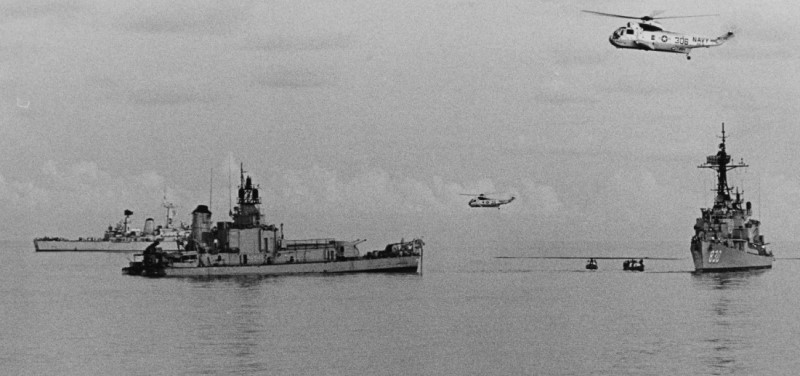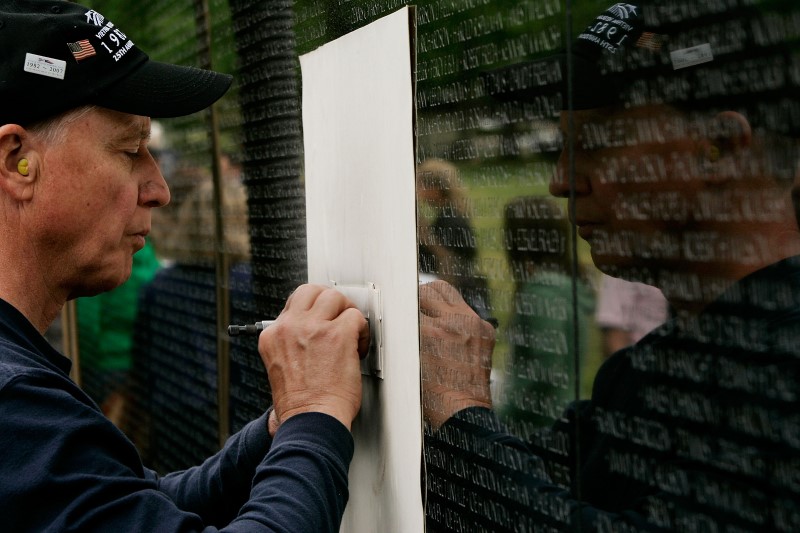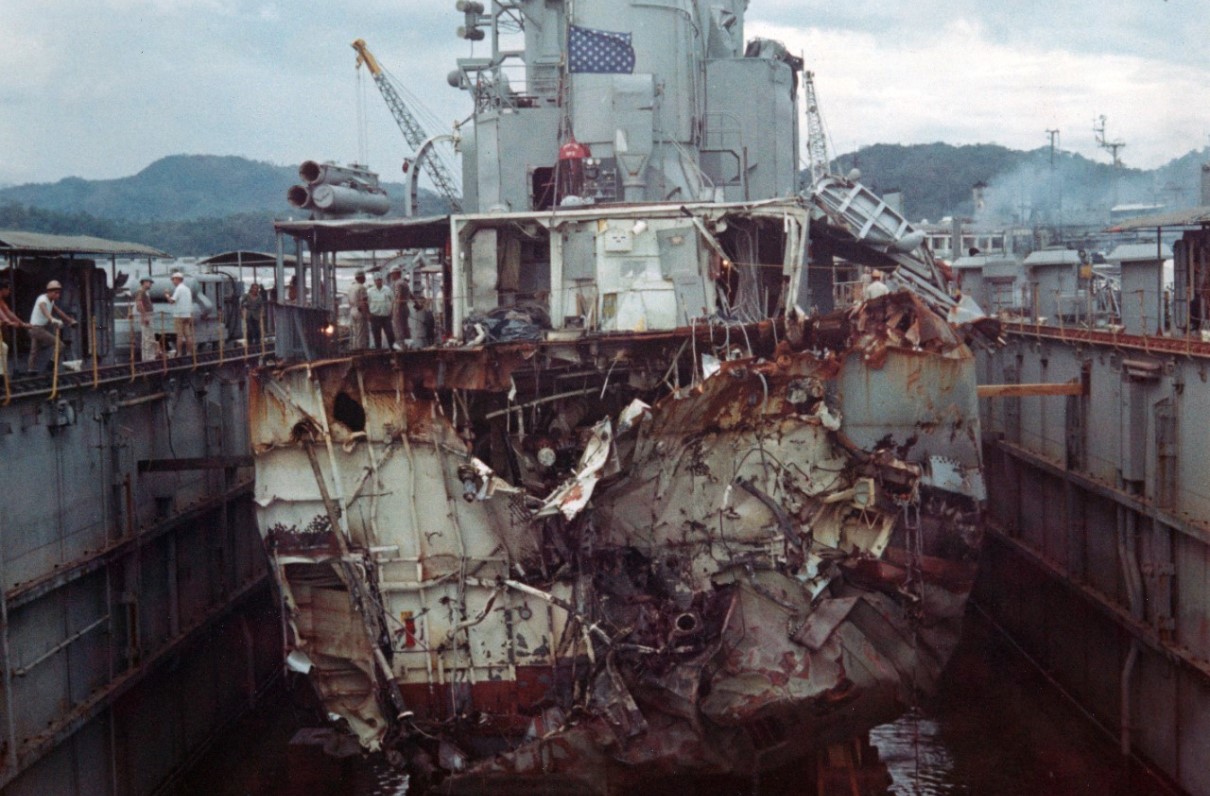By John Andrew Prime
As the 50th anniversary of the Vietnam War collision of the Navy destroyer USS Frank E. Evans (DD-754) and the Australian light carrier HMAS Melbourne nears, Evans survivors doggedly continue efforts to get the names of their 74 lost crewmates inscribed on the Vietnam Veterans Memorial.
The June 3, 1969, collision that cut the ship in two occurred just over 100 miles outside the official Vietnam War combat zone, offering an easy out for the Pentagon, which continues to oppose efforts to add the names of the lost men to the iconic Wall even though the ship was commissioned and manned because of the war in Vietnam.
"The absence of the names of the 74 sailors lost aboard the USS Frank E. Evans on the Vietnam Veterans Memorial is an injustice that must be rectified," says Rep. Adam Schiff, whose home state of California was home to 22 of the dead sailors - 30 percent of the casualties. "Over the years, I have engaged with multiple secretaries of defense to ask that they order the names to be added to the memorial, and when they have failed to act, I have sought legislative language to require the department to do so.
“We came closer than ever in 2018, when the House passed an amendment to the National Defense Authorization Act [NDAA] to require the names to be added. I intend to continue to work on this legislation until the families of those lost can see their loved ones properly recognized."
Schiff, a Democrat, is part of a rare group in Washington these days: bipartisan lawmakers who may be in line with President Donald Trump, who has been asked to follow in the footsteps of Ronald Reagan and issue an executive order to put the names on the wall. Other lawmakers who have co-sponsored or supported legislation to add the names include Sen. Charles Schumer, D-N.Y.; Sen. Cory Booker, D-N.J.; Sen. Pat Toomey, R-Pa.; Rep. Mark Meadows, R-S.C.; and Rep. (and Senator-elect) Kevin Cramer, R-N.D.
"The USS Frank E. Evans had just exited the combat zone at the time of the wreck," Cramer said in July when a measure to add the names was attached to the NDAA. "Having the names of the lost heroes memorialized is an honor I hope we can achieve for their friends and family."

The stern section of the destroyer USS Frank E. Evans (DD-754) is tied up alongside the destroyer USS Everett F. Larson (DD-830), after the Frank E. Evans was cut in two in a collision with the Australian aircraft carrier Melbourne. (PH2 J.C. Borovoy/Naval History and Heritage Command)
The measure was stripped from the NDAA, but Booker, like Schiff and Cramer, continues to support the effort.
"The brave heroes aboard the USS Frank E. Evans who made the ultimate sacrifice to our nation deserve to be remembered and recognized for their courage and their service," Booker told MOAA. "Adding their names to the Vietnam Veterans Memorial Wall in Washington D.C. is an important gesture to honor their memories and show their families our respect and appreciation. I am committed to continue working with my colleagues in the Senate and the House to ensure that we do right by these fallen service members and their families.”
Schumer, who leads the Senate Democrats, vowed to continue to support the quest in May, when his constituent, Master Chief Lawrence Reilly, USN (Ret), who was on the destroyer with his namesake son when it sank, died. The younger Reilly, 20, went down with the ship.
"We will continue to pressure the Pentagon to recognize the Frank E. Evans on the Vietnam Memorial," Schumer said.

Helicopters from the anti-submarine carrier USS Kearsarge (CVS-33) join search-and-rescue operations over the stern section of the destroyer USS Frank E. Evans (DD-754) as the destroyer USS Everett F. Larson (DD-830), right, stands ready to offer assistance. (Navy photo/Naval History and Heritage Command)
The decades-long effort has met resistance from the Pentagon and the National Park Service, which in recent letters to Schiff and other lawmakers cite the distance from the combat zone, as well as space limitations on the Wall, in denying the placement.
"It has been a struggle for more than 20 years," said former Quartermaster 2nd Class Chuck Huber, USN, who served on the destroyer from 1963 to 1965 and lost a close friend in the collision. "You name it, we've done it. It's been in the newspapers, it's been in the news. You name it, we've tried it and have gotten no place with it."
New Orleans author and investigative journalist Louise Esola was born a decade after the tragedy, but as a Marine Corps spouse and mother, she was outraged when she learned of the issue while doing research into the loss of the sailors. That work led to a meticulously researched 2014 book, "American Boys." In the years since, she's been further angered by the excuses given to Schiff and other lawmakers, as well as the Navy's removal, in early 2017, of online records of the destroyer and its crew that credited Vietnam War service for the month the collision occurred.
"It's absurd for the Navy to say that ship was not in the combat zone when that entire area, as far as the Navy goes, in the South China Sea, was in the theater of war," she said, noting that the zones are created through presidential executive orders mainly as "a vehicle for the IRS to define whose pay is taxed and whose is not.”
[THE NAMES: Learn more about the 74 sailors lost]
Navy ships there to support the Vietnam War cruised in and out of this combat zone weekly, she said: “They were only there because of the war.”
Since its dedication in November 1982, more than 400 names have been added to the Wall's original roster of 57,939. President Reagan ordered 68 names to be added in 1983, mostly Marines killed when a flight returning them to South Vietnam from rest-and-relaxation leave in Hong Kong crashed on takeoff, well outside the official combat zone. The largest addition, 110 names, occurred in 1986, when the geographic criteria was enlarged to include people killed outside the war zone while on or in support of direct combat missions or who had subsequently died of wounds received in Vietnam.
Educating lawmakers on the history of the Frank E. Evans and the effort to get the names on the wall, and getting President Trump to follow in the path of Reagan and order the additions, are goals of the USS Frank E. Evans Association, whose nearly 300 members are led by Steve Kraus. The group is planning its 50th anniversary reunion for May 31-June 3 in Long Beach, Calif., where the ship was homeported. As a 22-year-old signalman on duty at the time of the collision, Kraus had a front-row seat of the action.

Expert stoneworker James Lee helps works on a template as he begins to inscribe one of three new names on the walls of the Vietnam Veterans Memorial on May 3, 2007. More than 400 names have been added to the memorial's original roster. (Win McNamee/Getty Images)
"We are still going to be tested by the Department of Defense," he said. "We need to continue to educate the senators and congressmen, and we need to do that before the next NDAA. That is our strategy. We do have official letters to President Trump and Vice President Pence asking for an executive order. We still have not received any response, though some insiders have said it was not rejected. It's sitting in the making somewhere."
Cmdr. Richard Merki, USN (Ret), a MOAA member who joined the year after the collision, hopes Trump will act.
"We were kind of hoping that President Trump would just go ahead and do a Hail Mary on this and order it to be done," Merki said.
Esola thinks the exclusion is largely due to the number of men lost and the inconvenience adding them would cause.
"It's because there are 74 names," she said. "If it were seven names, if it were four names, the names would be on the wall. ... It would be the largest addition of names to the Memorial Wall. But we put a man on the moon. We can add 74 names to the Vietnam Memorial Wall."
